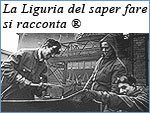Oral Source analyzed between AESS and Ansaldo Foundation
by Renata Meazza
|
 |
| Enlarge text |
 |
 |
|
Giuseppe, 60 years old
I was born in Sesto San Giovanni. My people have lived in Sesto for more than three hundred years. You can see that it is written in the parish register. My son did some research about our family; he told me that since 1600-1700, we have surely been in Sesto. My grandfather was a peasant; […] he milked dairy cows for the Zappa family, big landowners of Sesto who had lands, farms, houses, animals, and a big villa. My grandmother was a housewife. My father was already a factory worker; he worked for Breda and then Falck. He started working in a factory when he was nine years old […].
In 1985, we published the interviews of factory workers collected by Franco Alasia in Sesto San Giovanni for the book Milano e il suo territorio, dedicated to Milan, and to its historical, anthropological and social profile.
The metropolitan area, but also the cultural fabric of its surrounding countryside and of the entire province, was analyzed by different points-of-view: archival (historical records), literary (oral testimonies and writing), ethnographic and social (songs, street shows, urban rituality), ethnographic and anthropologic (immigration, work, socializing places) and linguistic (oral sources, linguistic research, and dialects of both Milan and its outlying areas).
Along with the oral histories, an essay by Maria Luisa Betri was published: Fonti orali e ricerca storica: le esperienze lombarde e milanesi. In this essay, the author writes that “interest in oral history has become fashionable” but at the same time, it “stirs up the waters” because for some people, oral history evokes the image of “a new ghost that wanders about the corridors of the academy”. I suspect that reflections on this theme, more than twenty years later, probably haven’t changed very much.
Oral testimonies tend to arouse both academic wariness as well as the enthusiastic and uncritical support of those who improvise historical or ethnographic research.
That oral history is a record with its own legitimacy, is not fully recognized even today. Oral sourcing employed as an instrument to extend the understanding of historical and social facts and add the emotional, subjective and even indescribable dimension to more traditional records, is not always accepted.
Between 2002 and 2004, the Archives of Ethnography and Social History of Lombardy together with the Centro per la Cultura d’Impresa promoted, a well-coordinated project on the theme of work entitled “Luoghi della Tradizione e del Lavoro” (Places of Tradition and Work).
In this project, all the description of characteristic features of Lombardy’s geographic divisions, which were included, came from hundreds of hours of recording of the oral testimonies collected in the Archives and results from the research carried out in the field for the occasion, as well as from a large number of bibliographic sources.
If written sources contribute mainly to outline (in a sense, “from the top”) an organic picture of the territory and of the main points that characterize its modern evolution; oral history offers a perspective image seen “from the bottom”. Even if it lacks systematic characteristics, oral history reveals the world, both physical and symbolic, in which the authors lived, and shows recent changes of the regional territory. Here were men and women who belonged to the rural world, linked to the dairy farm: their daily life in the fields, in the sheds, in the rice-paddies or in the spinning mills far from home. Their lives unfolded on the river, on the mountain pastures or along the herding paths for livestock as well as the paths of small nomadic commerce. Their history brought them in more recent times, to the world of the mine, the factory and then, modern business.
This question may also be considered from other points-of-view. One of these arises from the current debate that revolves around the concept of “immaterial heritage” and its recognition in the field of cultural assets. This is particularly relevant regarding the forms of individual and collective expression: that is to say, the language, the knowledge, the memory, which are the most expressive forms recognized. Nowadays, this allows us to extend the issue of oral testimony as a means to look more deeply into the geographical and historical picture, or into the overall expressiveness of a social group, or also into a category of workers, to the theme of its restitution to the community itself.
Within this perspective, we might reflect on the modality of oral testimony as a legitimate instrument. There are many factors to be considered: how to set up a dialogue with the source, how to prepare for the meeting, how arrange an interview that analyses many themes and, at the same time, is capable of seizing the unexpected and of accepting new knowledge. Finally, other questions concern how to catalogue and analyze the dialogue, which cannot yet, be formalized in order to render its complexity into a simple form.
The project “La Liguria del saper fare si racconta” constitutes an important laboratory in making this step: an entire regional territory has been narrated through the voices of the people who contributed to the building of some of its major companies.
Participation in the Scientific Committee allowed us to share – also through a profitable disciplinary exchange – the methodology of the research work and will allow us, in future, to conceptualize the theoretical and operational procedures for the restitution of the records.

